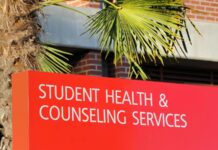A growing number of physicians, many established leaders in their fields, are discovering they have Attention-Deficit/Hyperactivity Disorder (ADHD) later in life. For decades, the condition has been framed as a childhood behavioral issue, but that overlooks the unique strengths it can unlock, particularly in demanding professions like medicine.
The ‘Lost Generation’ and Late Diagnosis
Many high-achieving women and professionals were overlooked by early diagnostic systems focused on disruptive boys. These individuals appeared well-behaved, hardworking, or adept at masking their neurodivergence, preventing recognition of their underlying ADHD. Yet, they succeeded despite this lack of support.
Interviews with psychiatrists and specialists reveal a consistent pattern: traits traditionally seen as ADHD drawbacks – such as distractibility and difficulty with administrative tasks – are often the same strengths that make these physicians exceptional clinicians.
The Power of Associative Intelligence
One key strength is associative intelligence – the ability to recognize patterns across seemingly unrelated domains. Psychiatrist Dr. Julie Le, for example, identifies overlooked ADHD in treatment-resistant depression patients, particularly older women, improving outcomes through this insight.
Similarly, anesthesiologist Dr. Linda Bluestein sees connections in complex, multi-system disorders like Ehlers-Danlos Syndrome (EDS) long before others do. In a fragmented medical system, this ability to synthesize information across disciplines is invaluable.
Hyperfocus: A Double-Edged Sword
ADHD is often associated with distraction, but those with the condition experience attention differently. Interest drives focus, and when something matters deeply, hyperfocus takes over. Dr. Le leverages this to dive into complex psychiatric formulations, while Dr. Bluestein uses it to build her nationally recognized EDS expertise.
This deep immersion allows these physicians to tackle tasks others find impossible: Dr. Bluestein conducts extensive patient evaluations (up to six hours) with relentless energy, going far beyond standard practice.
Creativity and Innovation in Patient Care
ADHD brains excel at non-linear thinking, leading neurodivergent physicians to forge their own paths. Dr. Le pursued a rare combined family medicine–psychiatry residency, embedding mental health care directly into primary care systems. This model improves continuity and collaboration, addressing a long-standing healthcare need.
Dr. Bluestein, a former ballerina whose career was derailed by EDS, turned her setback into an opportunity, establishing a specialty clinic for EDS and hypermobility patients – one of the few in the nation. She even leverages her dance background to help hypermobile dancers, a historically misunderstood population.
Mission-Driven Empathy
Many ADHD physicians share a deep sense of compassion, stemming from their own experiences feeling misunderstood or dismissed. This empathy drives them to advocate for complex patients who often fall through the cracks. Dr. Bluestein opened her hypermobility practice after being overwhelmed by emails from patients begging for help.
Dr. Le worries that other clinicians may overlook ADHD in patients, fueling her commitment to accurate diagnosis and care. These doctors approach medicine with a sense of responsibility beyond individual patients, aiming to fix systemic failures.
Persistence and Reinvention
ADHD presents real challenges – late-night charting, administrative struggles, procrastination. Yet, when motivated, individuals with ADHD demonstrate remarkable persistence. Dr. Le navigated medical school, residency, and multiple clinical roles, while Dr. Bluestein rebuilt her career after losing her dance career.
This creativity, adaptability, and grit are often overlooked in discussions about ADHD.
Why This Matters
The prevailing narrative around ADHD remains negative, warning of school dropouts and professional struggles. This framing ignores the strengths of late-diagnosed adults thriving in demanding fields. Shifting the conversation is essential.
Children deserve to hear that ADHD carries strengths the world needs: creativity, empathy, innovation, and the ability to see what others miss. The success of physicians like Dr. Le and Dr. Bluestein proves that neurodivergent brilliance can drive meaningful change in medicine.

































